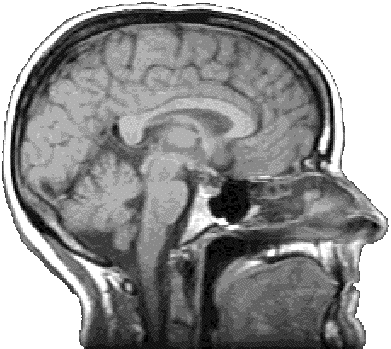
|
Project Overview
- This project addresses the question of how the brain
encodes information, and what information is encoded
in the spike train signals.
- From the spike train analysis project above, we can
deduce what the operation principles of the neural
network are (using the black-box approach), the next
step is to go to the next-level of abstraction, and
determine what these signals "mean." Basically,
we ask the question of what is represented in the spike
train code by a set of neurons.
- What is important to address is that neurons don't
function in isolation, i.e., no single neuron determines
the overal function of the system. The output of the
central nervous system (CNS) is determined by the collective
output of individual neurons. This implies that the
function of each neuron is determined by the interrelationships
among the neurons within the network. So our objective
is to see how the brain encode (and represent) signals
not just by a single neurons.
- Thus, the signal decoding project is to examine what
signals (information) are represented/encoded in a
network of neuron by its collective propoerties, i.e.,
by the population dynamics.
Rationale
- The question of what signals are being encoded by
neurons is actually more evasive than just figuring
out what it does. In engineering terms, signal content
is relative, i.e., it depends on the "eyes of
the beholder." The same signal can be interpreted
differently by different observers. What is that? Because
the signal content is dependent on both the encoder
and the decoder. That is to say, a signal is only meaningful
if the encoder and decoder agree on what the signal
representation is. If they agree on a common scheme,
the signal can be decoded by the decoded; if not, the
signal is "meaningless." This is precisely
what signal encryption is all about. When a signal
is encoded in a form usign a scheme that is unknown
to the decoder, the signal is lost (in garbage). To
the decoder, the signal is random. But to the encoder,
the signal is not random, and is highly meaningful.
- So, the question becomes addressing the signal relevant
to the encoder and decoder. In other words, a signal
cannot be considered in isolation independent of the
encoder and decoder. What is interesting is that the
same signal can be interpreted differently depending
on the decoder. In other words, the same signal can
have multiple representations, and these multiple interpretations
can be extracted by different decoders. This is what
engineers called "multiplexing." A multiplexed
signal actually convey multiple meanings – it
is all up to the decoders to extract the multiple representations
within the same signal. This is a very economical and
efficent way to represent signals.
- So the task for this project is to address the encoder
and decoder functions so that the meaning (and representation)
of the signals embedded in the spike trains can be
extracted/decoded.
Research Objectives
- To decode the signals represented by the spike train
based on the relationship between the encoded information
and the decoded output in a network of neurons. The
neural signals can be encoded by a set of neurons in
a network, and different aspects of the signals will
then be decoded/extracted by other neurons. This is
essentially how the brain processes information – by
extracting the different components of the original
signals that is meaningful to the subsequent stages
of analysis.
- For instance, the sensory signal of limb position
can be decomposed/extracted into displacement (=x),
velocity (=dx/dt), acceleration (=d2x/dt2)
and jerk ((=d3x/dt3) for subsequent
analysis of the components of the movement.
- That is to say, we need to identify the "meaning" of
the signal within context (i.e., relevant to the encoder
and decoder). Most often, this means relevant to the
physiological context or behavioral context of the
signal being processed.
Specific Goals
- Given a set of spike trains, identify what these
signals represent in relation to what is encoded and
what is decoded. It is a question is signal representation
as well as a question of signal re-representation.
The Challenge
- Find the representation of pulse-coded timing signal
such that the information is embedded in the timing
of these signals.
The Solutions
- See publication: Zouridakis, G. and Tam, D. C. (2000)
Identification of reliable spike templates in multi-unit
extracellular recordings using fuzzy clustering. Computer
Methods and Programs in Biomedicine. 61: 91-98.
- See publication: Zouridakis, G. and Tam, D. C. (1997)
Multi-unit spike discrimination using wavelet transforms.
Computers in Biology and Medicine. 27: 9-18.
- See publication: Zouridakis, G. and Tam, D. C. (1995)
Recognition and classification of multineuron activity
using a fuzzy-clustering approach. In: Computational
Medicine, Public Health and Biotechnology: Building
a Man in the Machine. (M. Witten and D. J. Vincent,
eds.) Mathematical Biology and Medicine, Vol. 5, pp.
932-947.
- See publication:
|
